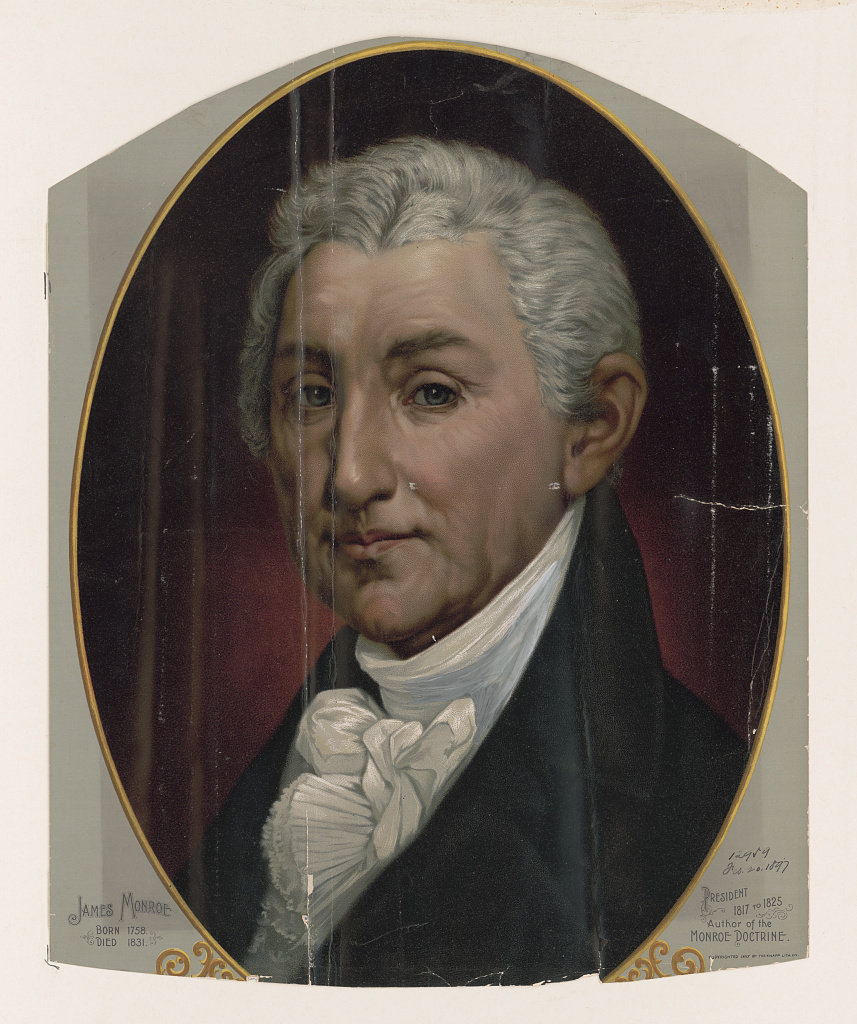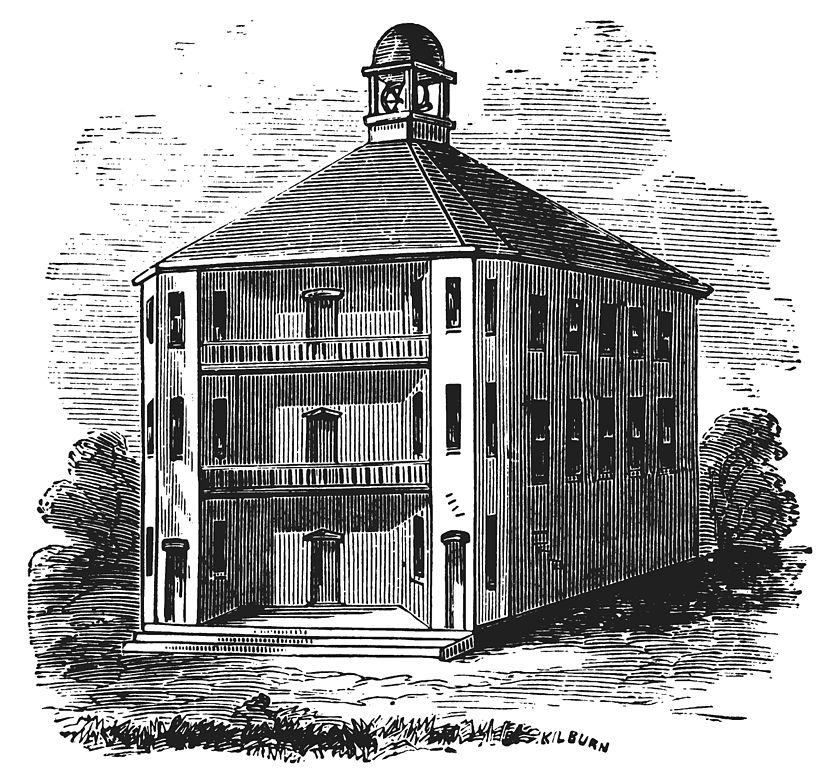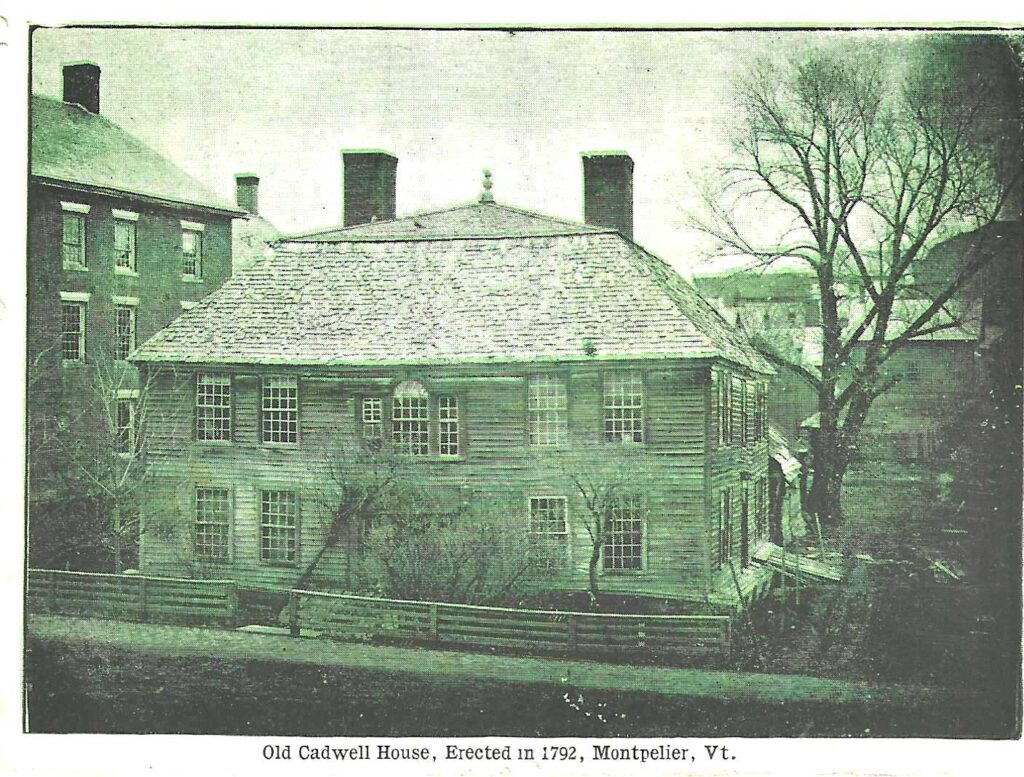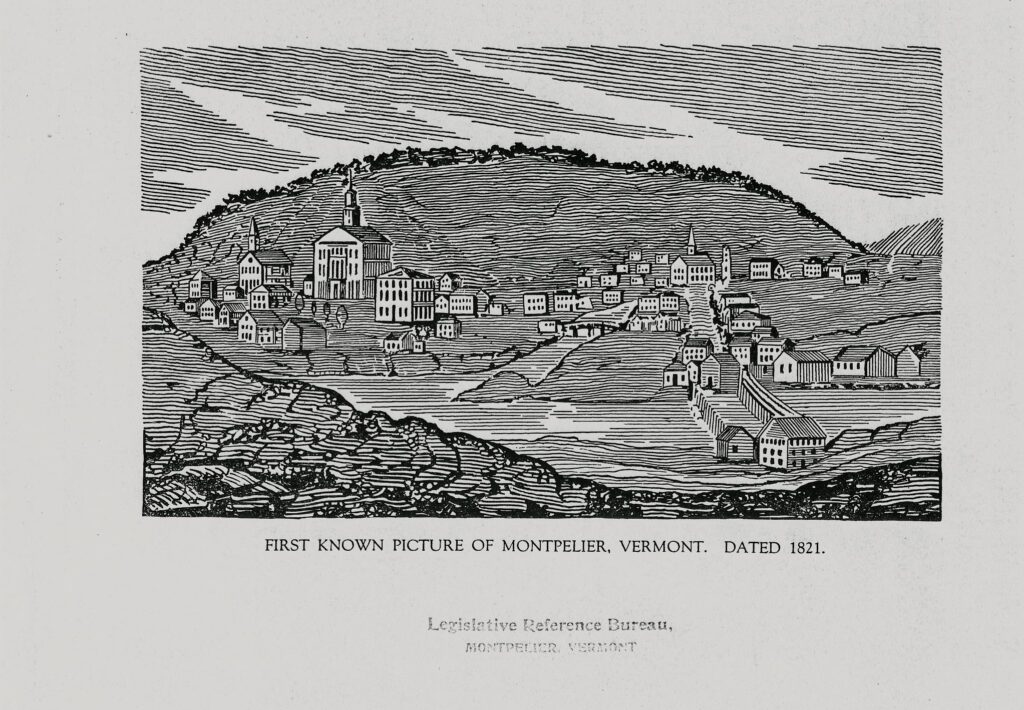– President James Monroe visits Montpelier 1817
President Monroe and the Scholars of Montpelier, 1817

from Library of Congress
By Paul Heller
Presidential visits to Vermont are relatively rare. The earliest visit to Montpelier by a sitting President was that of the fifth chief executive, President James Monroe, who came to the Green Mountains in July of 1817. This occasion is well documented in S. Putnam Waldo’s The Tour of James Monroe (1819).
During the summer of his first year in office, the President embarked on an excursion of the northeastern United States, arriving in Montpelier on the 24th of July. The purpose of his extended sojourn was to build a sense of national unity in a country that was then riven by political discord.
He entered Vermont at Norwich after crossing the Connecticut River from New Hampshire, and made his way to Stafford where he was given a tour of the copper mine. It was then on to Windsor to be entertained by the “Members of the Windsor Female Academy.” He left Windsor for Woodstock and was greeted with an artillery salute. An account of his tour notes, “the president passed from this place through Royalton upon White River, to Montpelier, the political capital of Vermont.”
Monroe’s entrance to Montpelier was planned with much pomp and pageantry. He was met in Berlin (then just across the Winooski River from downtown Montpelier) by the Committee of Arrangements which had prepared an elaborate procession through town. Parade marshals ordered the convoy, and just before 11 a.m. cannon fire announced the “approach of the Chief Magistrate of the nation.”
As he entered the town, Monroe alighted from his carriage, mounted a horse, and continued with his entourage along Main Street “lined on each side by citizens” until he reached Montpelier Academy. The traditionally designed school building was near where the Main Street round-about is today. A contemporary account from the Vermont Freeman describes it:

“Academy ” is Montpelier Academy
As one enters the town from the south, one scarcely gets fairly into the Main street before this building bursts on his view, in the distance, in all its magnificent proportions. It is situated exactly in the sharp corner formed by two nearly transverse streets, which run directly under its windows, and so near that the wagoner can strike it with his whip, as he passes on one side, and on the other reach the entrance with three bounds from his wagon.
The two-story structure was capped with a bell tower.
Typical of most academies, the one in Montpelier was, at first, dedicated to the instruction of boys, but by 1809, it was announced that “an additional room has been fitted up in the academy for the accommodation of a ladies’ school.” A female teacher had been employed to instruct her charges in “reading, grammar, geography, painting, embroidery, and the various kinds of needlework.”
Upon reaching the Academy, President Monroe then reversed course, returning to the junction of State Street where he was met by members of the Montpelier militia, the First Light Company, under the command of E.P. Walton. General Walton was the publisher of both the Watchman, a Montpelier newspaper,and Walton’s Register, an annual almanac that continued to be published for almost 200 years. The militia escorted the President to the State House where he was again treated to a volley of artillery fire.
In front of the State House, between three and four hundred Masters and Misses, Students of the Academy and members of the schools in the Village, dressed in a neat uniform, each tastefully decorated with garlands from the fields of nature, were arranged in two lines facing each other, in perfect order.

The symbolism of the reception in Montpelier bespoke the spirit of the Age of Reason. Young scholars receiving the President in the State Capital served as a fitting tribute to the era that valued the scientific method as well as the Bill of Rights.
The President walked through this assemblage of youth, uncovering his head, and bowing as he passed.
Monroe then entered Vermont’s unassuming first State House, under an arch of evergreens. A two-sided placard read “July 4, 1776” on one side and “Trenton Dec. 26, 1776” on the other. The later date referred to Monroe’s status as a hero in the Revolutionary War. Young Lieutenant Monroe had been wounded at Trenton and had to be carried from the field of battle, with a musket ball in his shoulder. He narrowly escaped death.
After a laudatory address at the State House, to which Monroe offered a brief response, he was given “three times three” enthusiastic cheers by the citizens of Montpelier. With that, Monroe retired to The Representatives Room to meet with the scholars who had lined his path to the State House. The students rose as he entered and their headmaster proclaimed, “I present to your excellency the finest blossoms and fairest flowers that our climate produces.” Monroe then examined projects submitted by the students “including maps and globes drawn by the scholars.”

The President was then escorted to the Cadwell House by the Washington Artillery, a militia company commanded by Capt. Timothy Hubbard, “where he partook of a cold collation served up with admirable taste and elegance.”
The schools then formed a procession, preceded by the first Light Company, with instrumental music, and moved to the Academy. In passing the President’s quarters [Cadwell House] they saluted him, the masters by uncovering their heads, and the misses, by lowering their parasols
A historical marker is attached to the Blanchard Block where the Cadwell House once stood.
President Monroe, after evincing his pleasure with the reception he received in Montpelier, made his way to Burlington.

